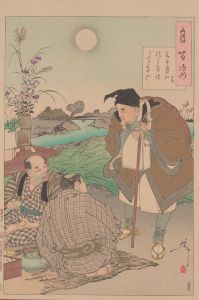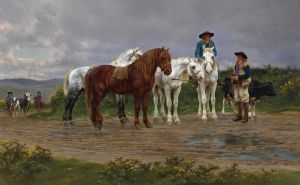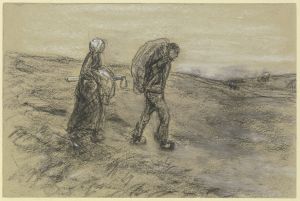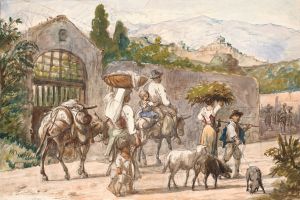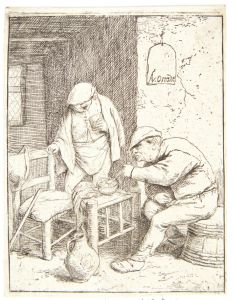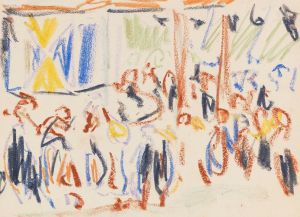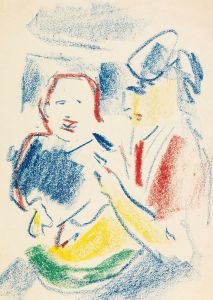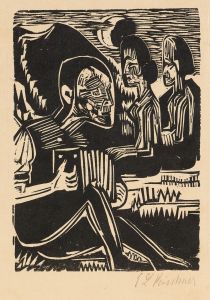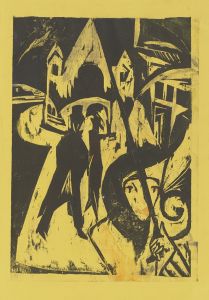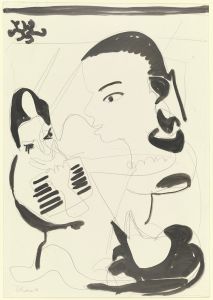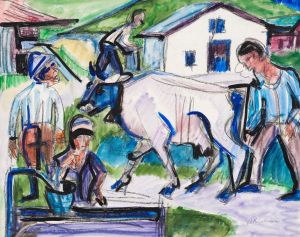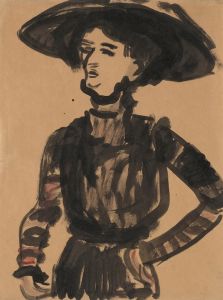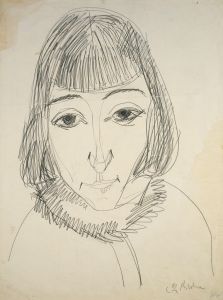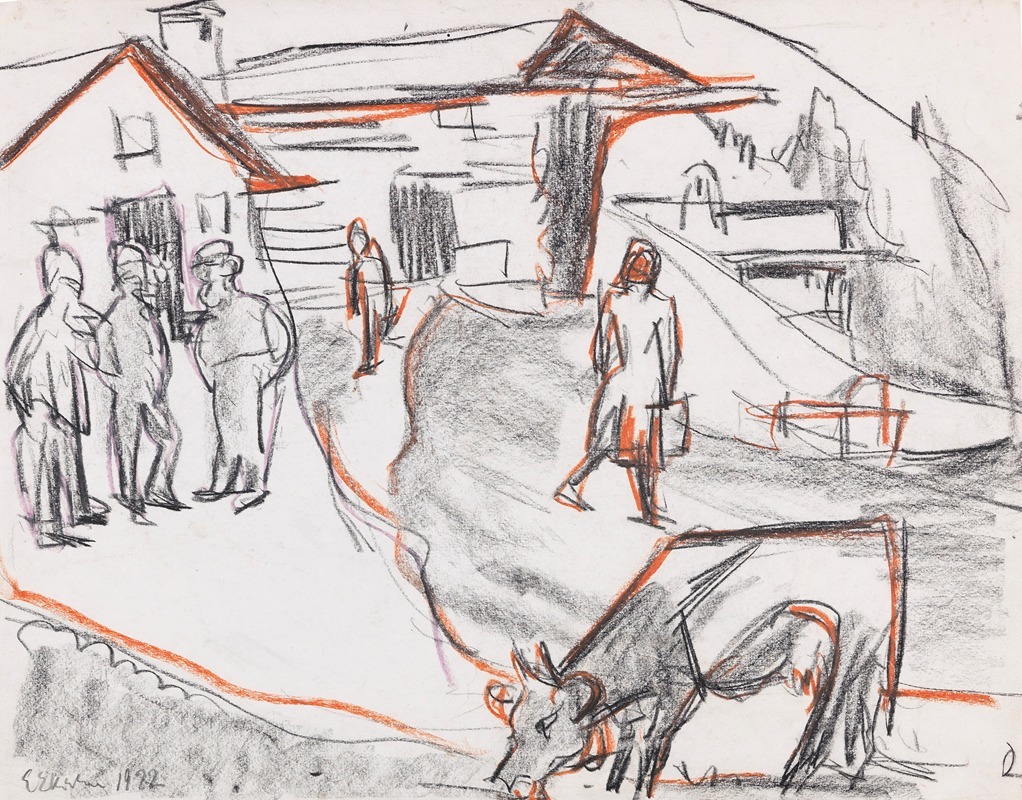
Bauern auf der Alp
A hand-painted replica of Ernst Ludwig Kirchner’s masterpiece Bauern auf der Alp, meticulously crafted by professional artists to capture the true essence of the original. Each piece is created with museum-quality canvas and rare mineral pigments, carefully painted by experienced artists with delicate brushstrokes and rich, layered colors to perfectly recreate the texture of the original artwork. Unlike machine-printed reproductions, this hand-painted version brings the painting to life, infused with the artist’s emotions and skill in every stroke. Whether for personal collection or home decoration, it instantly elevates the artistic atmosphere of any space.
Ernst Ludwig Kirchner, a prominent German expressionist painter, created the artwork "Bauern auf der Alp" (Farmers in the Alps) during a period marked by his exploration of vibrant colors and dynamic compositions. Kirchner was a founding member of the artist group Die Brücke (The Bridge), which played a crucial role in the development of Expressionism in the early 20th century. This movement sought to convey emotional experience rather than physical reality, often through bold colors and exaggerated forms.
"Bauern auf der Alp" is an exemplary piece that reflects Kirchner's fascination with rural life and his deep connection to nature. The painting depicts a pastoral scene in the Swiss Alps, where Kirchner spent a significant portion of his later life. After moving to Switzerland in 1917, Kirchner was profoundly influenced by the alpine landscape, which became a recurring theme in his work. The Swiss environment provided him with a sense of solace and inspiration, especially after the traumatic experiences he endured during World War I.
In this painting, Kirchner captures the essence of rural life through his distinctive style. The composition is characterized by its vibrant palette and dynamic brushwork, which convey a sense of movement and vitality. The figures of the farmers are rendered in a manner that emphasizes their connection to the land, blending harmoniously with the surrounding landscape. Kirchner's use of color is particularly noteworthy; he employs a range of hues to evoke the natural beauty of the Alps, while also imbuing the scene with emotional depth.
The painting reflects Kirchner's interest in the relationship between humans and nature, a theme that is prevalent throughout his body of work. By portraying the farmers in such an integrated manner with their environment, Kirchner suggests a symbiotic relationship, highlighting the importance of nature in sustaining human life. This theme resonates with the broader context of Kirchner's life and work, as he sought refuge in the natural world amidst the chaos of modernity and war.
Kirchner's time in Switzerland marked a period of both personal and artistic transformation. The isolation and tranquility of the Alps allowed him to develop a unique artistic voice, distinct from his earlier works created in the bustling urban environments of Dresden and Berlin. "Bauern auf der Alp" is a testament to this evolution, showcasing Kirchner's ability to capture the spirit of a place and its people through his expressive style.
The painting is also significant within the context of Kirchner's career as it represents his continued commitment to the principles of Expressionism, even as the movement evolved and changed over time. His work during this period is characterized by a synthesis of form and color, which serves to communicate the emotional resonance of the subject matter.
Today, "Bauern auf der Alp" is recognized as an important work within Kirchner's oeuvre, reflecting both his personal journey and his contributions to the Expressionist movement. The painting is housed in various collections and continues to be studied and appreciated for its artistic and historical significance. Through this work, Kirchner offers a glimpse into the harmonious relationship between humans and nature, a theme that remains relevant in contemporary discussions about the environment and our place within it.





